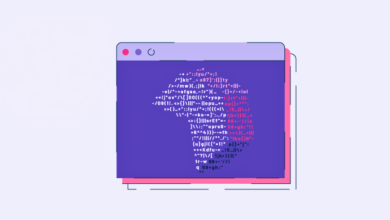AI Copilot for Test Automation: Boon or Bane?

Gone are the days when writing test automation meant hours of coding and debugging.
Now, AI copilots are the shoulders to lean on. They generate test cases, spot potential issues before they become problems, and improve code quality. Basically, it’s like having a second brain that speaks in code.
Yet, an AI copilot comes with its share of questions. As more people integrate it into their testing workflows, we need to understand its promise and pitfalls for testing and testers alike.
Let’s unpack this together.
Unpacking AI copilots: the new frontier in test automation
Copilots for test automation are stirring up excitement and debate among the software testing and quality assurance (QA) community. While some testers swear by them, others are skeptical and questioning whether AI copilots will replace them.
But before we discuss the burning questions and strategies, let’s examine what AI copilots are.
What are AI copilots?
AI copilots are tools powered by large language models (LLM) and generative AI that can seamlessly integrate into existing software ecosystems. An AI copilot for testing helps with test case writing, code snippet generation, and even discovering potential issues that may develop. This technology improves coding efficiency by using machine learning (ML), natural language processing (NLP), and advanced analytics.
An AI copilot can adjust its suggestions to align with user intent and logic, providing a clear picture of what developers are trying to achieve in their code. To do this, it uses highly sophisticated ML algorithms that estimate the most likely steps in the code based on a sequence of actions and common programming patterns.
Thus, AI copilots accelerate code generation, streamline problem-solving, and simplify test creation.
Furthermore, AI copilots make it easier for developers and testers to experiment with application programming interfaces (APIs) by automatically generating documentation. This enables users to discover what an API has in store for them and offers help by eliminating manual searches.
With these capable AI-driven assistants helping with a range of tasks, from summarizing daily updates to analyzing complex datasets, testers can now spend more time on high-impact, strategic initiatives.
How does a copilot for test automation work?
Understanding how copilots for test automation work can be broken down into three steps.
- Integration with code: AI copilots, sometimes called coding assistants, integrate with the developer’s environment and display relevant suggestions alongside the written code. These tools analyze the code in real time, providing context-aware support.
- Context analysis: In this stage, the copilot tracks not only the code itself but also comments and natural language descriptions within the project. This information is sent as a prompt to the copilot’s large language model, which processes the input to understand the programmer’s intent and the logic of the project.
- Code generation: Finally, based on the context analysis, the copilot predicts the next steps a programmer might take and generates code snippets or suggestions accordingly. It acts as a smart assistant, helping developers by reducing manual effort and speeding up the coding process.
The rise of AI in QA testing: why copilots matter
In today’s experience-driven marketplace, the demand for delivering high-quality software quickly is immense. This leads to a shorter software development lifecycle (SLDC) and, in turn, puts pressure on developers for quick, dependable testing.
AI copilots, along with traditional non-AI copilots, thus become critical components of the QA testing process. While non-AI copilots help automate repetitive tasks and manage workflows, AI copilots take it a step further with ML and advanced analytics to automate more complex processes like detecting defects and generating insights.
This distinction is important to understand because non-AI copilots have limited capabilities and stick to basic automation, while AI copilots can predict, analyze, and adapt based on evolving patterns in real time.
As AI continues to evolve, the role of AI copilots in QA testing will definitely continue to grow. They will allow companies to test software more comprehensively and accurately, handling a higher volume of tests than ever before.
The bright side: advantages of using AI copilots for test automation
Using AI copilots for testing brings about many benefits. While enhanced efficiency is a great advantage, it also allows testers to move beyond their roles from executors to more strategic oversight.
Let’s look at some of the main advantages:
- Boosting productivity: This is one of the most compelling advantages of deploying an AI copilot for automation testing. These copilots automate routine tasks, freeing up time for testers to focus on more complex scenarios that require human intellect. Thus, it goes without saying that this would increase productivity, accelerate the testing process, and improve the overall quality of the software that is being built.
- Precision and consistency: Human errors are unavoidable in the testing process. AI copilots offer an opportunity to reduce this risk. With automated test generation, copilots can reduce human oversight while covering all scenarios and tests that may be overlooked by a tester under pressure. These assistants can also help repeat these tasks without getting tired and avoiding the issues that come with fatigue experienced by human testers. Other than this, AI copilots deliver consistent results every time, as once they are automated, they can run the exact same procedures without skipping any steps.
- Adaptive learning: Another advantage of an AI copilot is its ability to self-learn from past data and improve. Over time, as it collects data, an AI copilot just gets better at predicting any potential issues and providing accurate results.
- Real-time feedback: These AI copilots can provide immediate feedback to developers as they conduct their tests or even generate code. So, the wait time for post-test analysis is removed from the equation allowing testers to resolve issues on the spot.
The challenging side: potential pitfalls of AI copilot for test automation
Like with any technology. There are the good sides and the bad sides. Understanding the challenges that come with using AI copilots would be the key to creating a sustainable approach to using it in test automation.
So, what are these challenges? Let’s take a look.
- The learning curve: One of the main challenges with an AI copilot is the learning curve that comes with using it.
The utilization of AI copilots in test automation is a significant leap forward in the testing landscape. While these tools offer numerous benefits, there are certain challenges and considerations to keep in mind for effective implementation.
Testers transitioning to AI-driven tools may require time to understand and trust the results delivered by these copilots, especially if they are accustomed to traditional methods. Overcoming initial resistance from testers will necessitate continuous support and adequate training to maximize the tool’s capabilities.
The “dependency dilemma” is a concern when testers become overly reliant on AI solutions for routine tasks, potentially leading to a loss of critical thinking skills. Striking a balance between human expertise and AI automation is crucial to avoid this pitfall and ensure optimal testing outcomes.
Although AI copilots excel at automating repetitive tasks, they have limitations in scenarios requiring human intuition and contextual understanding. Manual oversight is essential to catch errors and ensure the copilot’s output aligns with the testing objectives.
To strike the right balance between AI automation and human oversight, companies must integrate AI technologies into test automation with caution. Human testers bring unique skills like analytical thinking and imagination, while AI copilots enhance efficiency and accuracy in testing processes.
Looking ahead, the future of AI copilots in test automation holds promise with advanced machine learning features, improved integration across platforms, and AI-driven test strategy development. These advancements will reshape the testing landscape by redefining tester roles, accelerating software development life cycles, enhancing team collaboration, and shaping the future of QA testing.
In conclusion, adopting AI copilots for test automation provides a strategic advantage for companies looking to stay ahead of the competition. While implementation may pose challenges, careful oversight and implementation can transform test automation processes and drive accurate application delivery.
**FAQs related to AI Copilots in Test Automation:**
1. **Can AI copilots completely replace human testers?**
AI copilots complement human testers by automating routine tasks, allowing testers to focus on complex scenarios and strategic testing activities. They enhance, rather than replace, human expertise in testing processes.
2. **What are the key considerations when integrating AI copilots into test automation?**
Companies should strike a balance between AI automation and human oversight, ensuring that AI technologies enhance testing processes without leading to over-reliance. Continuous training and manual oversight are essential for successful implementation.
3. **What are the limitations of AI copilots in test automation?**
AI copilots excel at automating routine tasks but may struggle with complex, context-dependent decisions that require human intuition. Manual oversight is necessary to catch errors and ensure the copilot’s output aligns with testing objectives.
4. **How can AI copilots enhance team collaboration in testing processes?**
AI copilots can facilitate better collaboration between development and testing teams by providing feedback and suggestions across the testing process. This integration leads to more efficient workflows and improved productivity.
5. **What does the future hold for AI copilots in test automation?**
The future of AI copilots includes advanced machine learning features, improved integration across platforms, and AI-driven test strategy development. These advancements will redefine tester roles, accelerate software development life cycles, and shape the future of QA testing. sentence in a different way:
The cat sat lazily on the windowsill, basking in the warm sunlight.
The cat lounged on the windowsill, enjoying the sun’s warmth.



